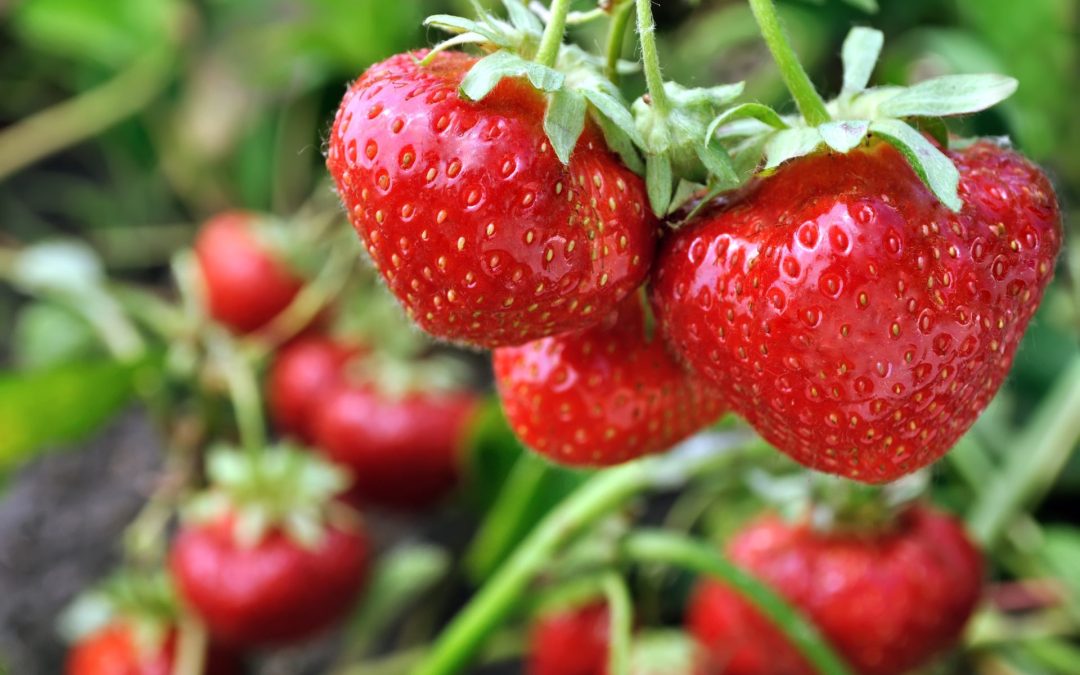Types of Strawberries
June-bearing – Produces one heavy crop of large fruit around md-June. These are preferred varieties for making jams and preserves for freezing. Hood being the most iconic as it was created in Oregon specific for our climate.
Everbearing – Produces two crops, one in early summer and another in late summer. The berries are a bit smaller in size, are very tasty and preserve well. These strawberry varieties are known to do well in containers.
Day-neutral – Produces consistently throughout summer until first frost, often presented in the same category as Everbearing. Day-neutral will set fruit regardless of how long the day is. Also does well in containers, tastes sweet, and is an excellent choice for a steady supply of fruit.
Alpine – Also known as the “Wild Strawberry”. These hardy evergreen perennials are very well behaved as they do not produce runners. The fruit is small but pack intense flavor and fragrance. They are great in window boxes, containers, as a nice groundcover. Producing sweet little fruit all summer.
Choosing a Site
Strawberries will need at least 8 hours of sun each day. Soil should be rich, well drained, sandy loam. A slight to medium acid soil is best. Due to strawberries’ high-water requirements, the soil needs to have plenty of organic matter to help hold moisture for growing plants. It is wise to amend the soil with compost prior to planting.
Planting Strawberries
It is important to plant as early as possible in the spring. Snow or light frosts will not hurt the plants. Plants should be planted in rows 12-18 inches wide. Plants should be planted 12-18 inches apart. Set plants with roots straight down. Care should be taken so that the plants are set with the crowns level with the top of the ground. This is especially important to the strawberry’s survival and overall health. Be sure to water the plants well after planting.
Strawberries can also be grown as edible edgings, in hanging baskets and in strawberry jars.
Harvesting
Berries will be bright red, slightly firm, and juicy when ripe. The berries will also have a natural shine. Strawberries should be picked at their prime – they do not ripen after picking.
Best harvesting is in the early morning hours and refrigerated at once.
Maintaining Strawberry Plant Health
To keep your plants healthy and productive over the years, follow these few steps:
- Runners should be removed for the first two years so the plant can put its energy into growing healthy roots and production. After that, let those runners propagate future plants. Be aware of over-crowding.
- Be very diligent about weeding, especially while plants are young and trying to get established.
- Fertilize with all-purpose fertilizer in early Spring and again when flowers appear with a high potassium tomato fertilizer.
- As soon as harvest is complete, mow off the leaves using your lawn mower set at the highest setting or cut down to 1 inch.
- Rototill to narrow row width to 12-18 inches. Remove excess plants to leave 3-5 inches around each plant.
- Maintain adequate moisture throughout the growing season.
- Mulch in November when plants start to go dormant. This will help with fluctuating temperatures.




